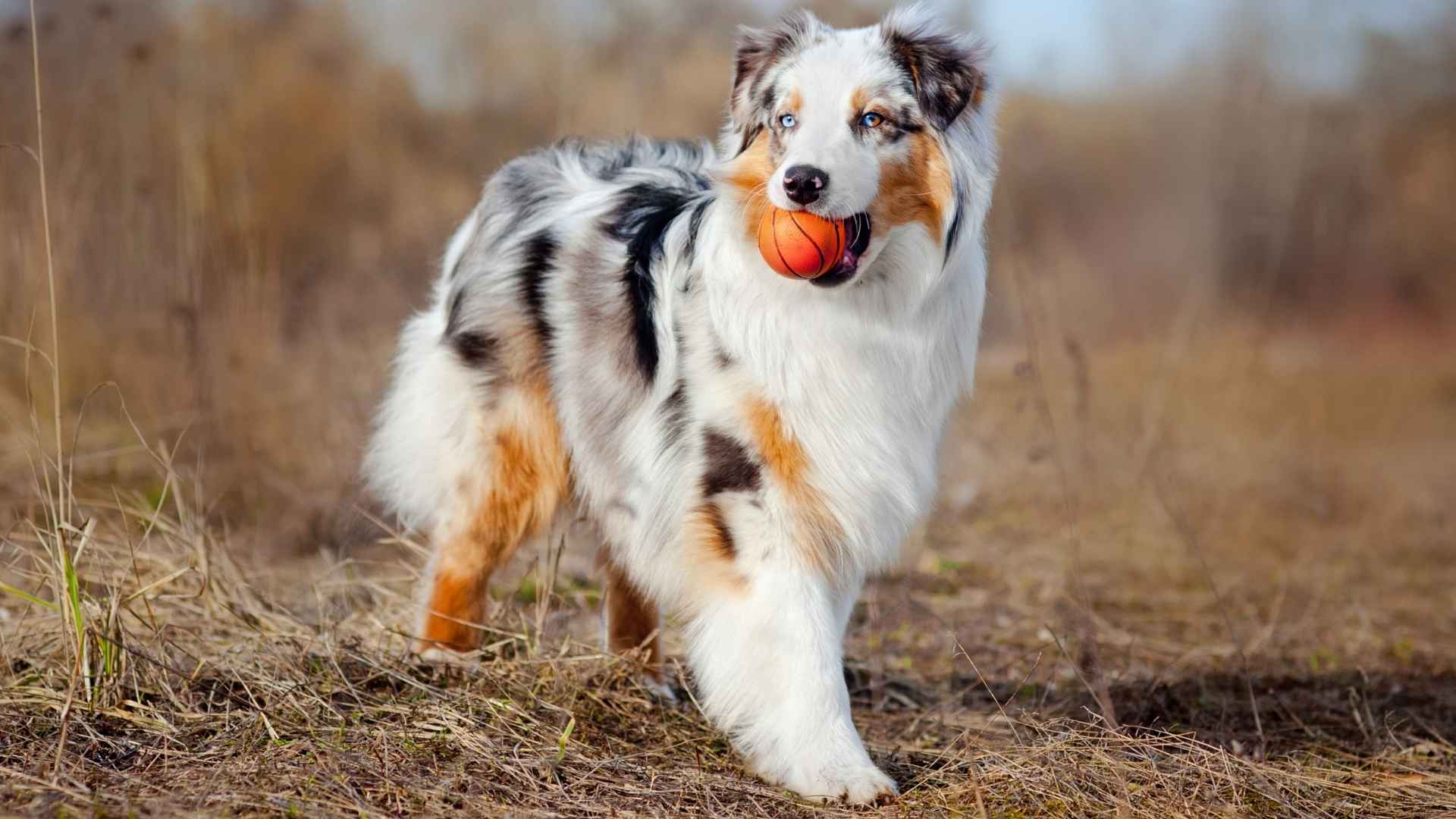Dogs are known for their diverse and delightful coats, ranging from sleek and smooth to curly and cloud-like. But beyond the visible beauty lies a key distinction in coat structure that impacts grooming, shedding, and even how dogs handle different climates. While many pups sport a single coat, others are equipped with a more complex and protective system: the double coat.
A double coat features two distinct layers, an insulating undercoat made of soft, dense fur, and a longer, protective outer layer called guard hairs. This natural armor provides excellent temperature regulation, keeping dogs warm in frigid weather and cool in the heat by trapping air close to the dog’s skin. They have a water-resistant outer coat that repels water and dirt, making these breeds well-suited for outdoor work and wet environments.
Many double-coated breeds were originally developed to perform demanding tasks in challenging climates, particularly cold regions or aquatic settings. In this article, we’ll explore some of the most well-known dog breeds that boast these double-layered coats and explain what makes them so uniquely equipped for both function and flair.
Dog Breeds With Double Coats
1. Akita

The Akita, also known as the American Akita or Great Japanese Dog, hails from Japan’s Akita Prefecture and is steeped in cultural significance. According to the AKC, the Akita is known for its noble demeanor, bravery, and deep loyalty to its family.
A loyal and powerful member of the working group, this breed is known for its imposing size, standing 24–28 inches tall and weighing between 70 and 130 pounds. With a proud posture, broad head, and curled tail, the Akita is both noble and protective. The breed gained worldwide recognition thanks to Hachikō, the famously loyal Akita who waited every day for his deceased owner at Shibuya Station for 10 years.
A defining feature of the Akita is its luxurious double coat, comprising a dense, plush undercoat and a straight, coarse outer layer. This coat is key to the breed’s ability to withstand harsh weather conditions.
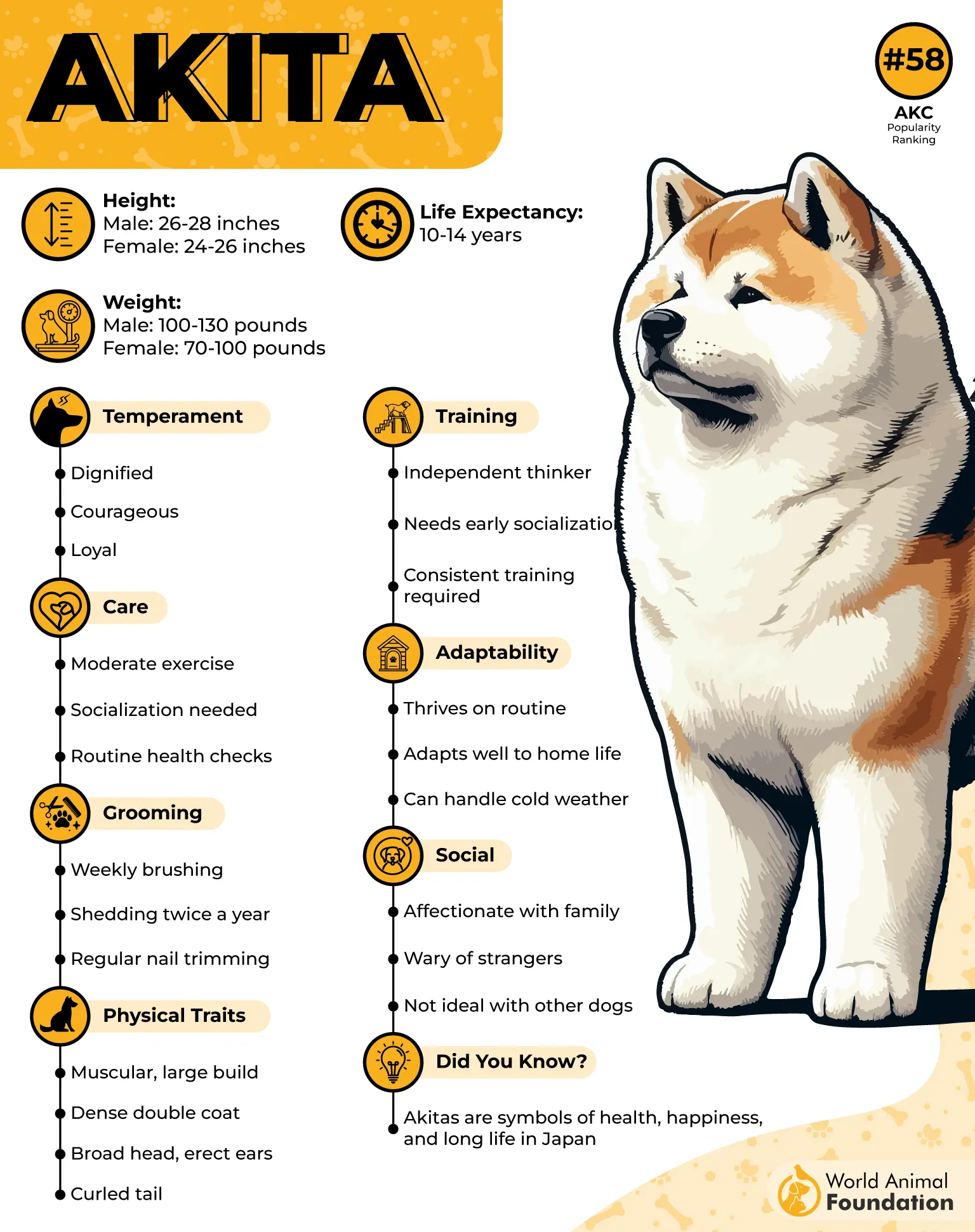
Grooming
Although these loyal dogs are generally clean and odor-free, their double coat requires consistent care. Weekly brushing suffices most of the year, but during seasonal shedding, when they “blow” their undercoat, daily grooming becomes necessary.
Professional grooming every 6–8 weeks helps maintain coat health and hygiene by addressing shedding, matting, ear cleanliness, and nail care.
Fact: Hachikō’s story inspired annual memorial services and a statue in his honor at Tokyo’s Shibuya Station.
2. Australian Shepherd

Known for their energy, intelligence, and striking good looks, the Australian Shepherd, often nicknamed the Aussie, originated in the western United States, not Australia, as the name suggests. Though developed primarily in California, this double-coated dog breed carries a variety of alternate names, such as Spanish Shepherd, Pastor Dog, Blue Heeler, and Bob-Tail.
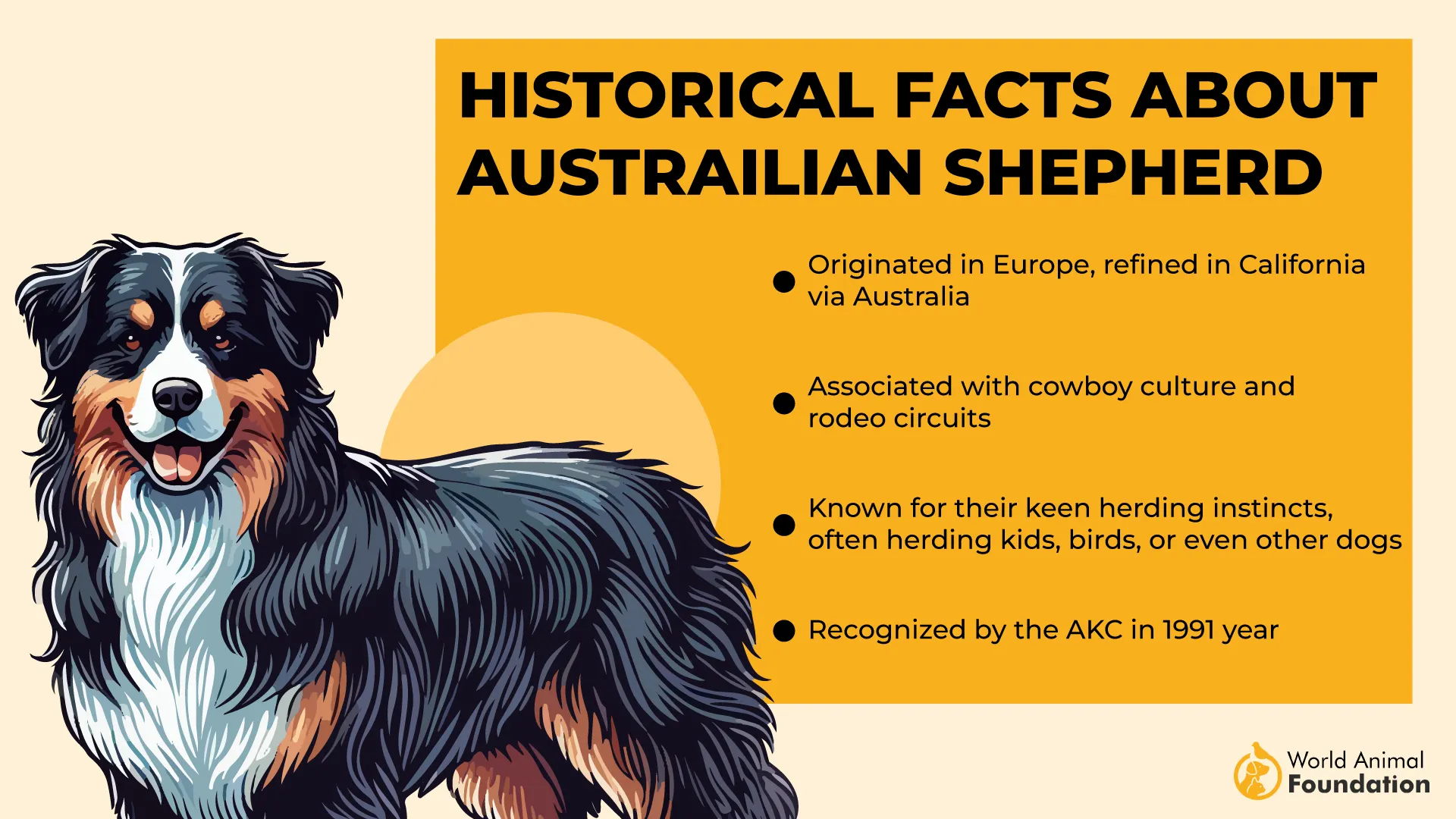
With a muscular build and agile frame, Aussies typically weigh between 40 to 65 pounds and stand 18 to 23 inches tall. Their expressive eyes, often in shades of blue or amber, along with their colorful merle coats, make them a standout in any setting.
PetMD states that Australian Shepherds are devoted and smart dogs, known for their strong personalities. Originally bred for herding livestock, they are now staples on rodeo circuits and beloved for their versatility and work ethic.
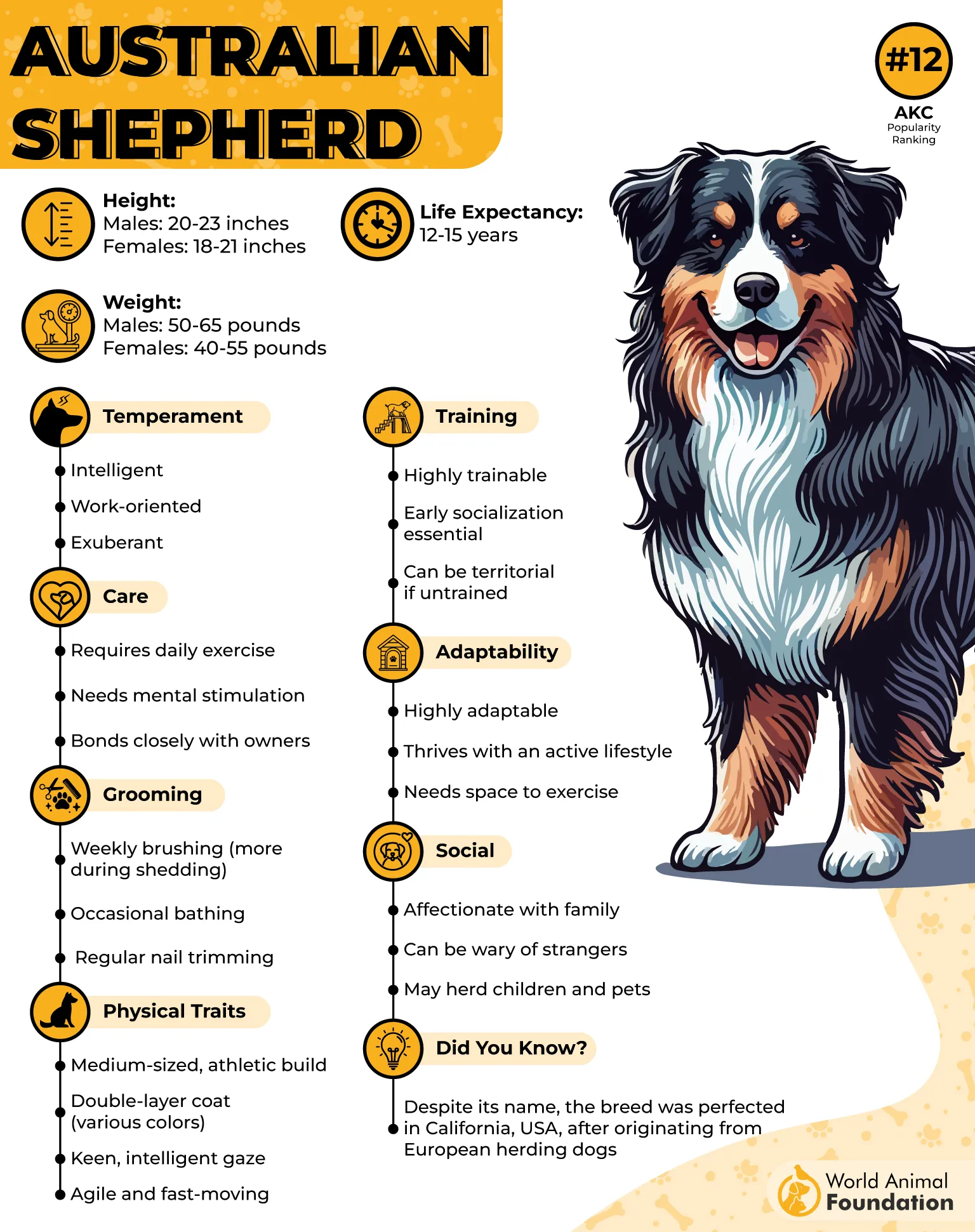
Grooming
Australian Shepherds have a double coat that includes a weather-resistant outer layer and a soft undercoat. To keep their fur in peak condition, they need brushing two to three times a week.
During shedding seasons, more frequent grooming with a rake is recommended to manage undercoat loss. Bathing every 6–8 weeks with a mild dog shampoo helps preserve their coat’s natural texture and oils.
Fact: Despite their name, Australian Shepherds were developed in the U.S. and are deeply associated with American cowboy culture.
3. Bernese Mountain Dog
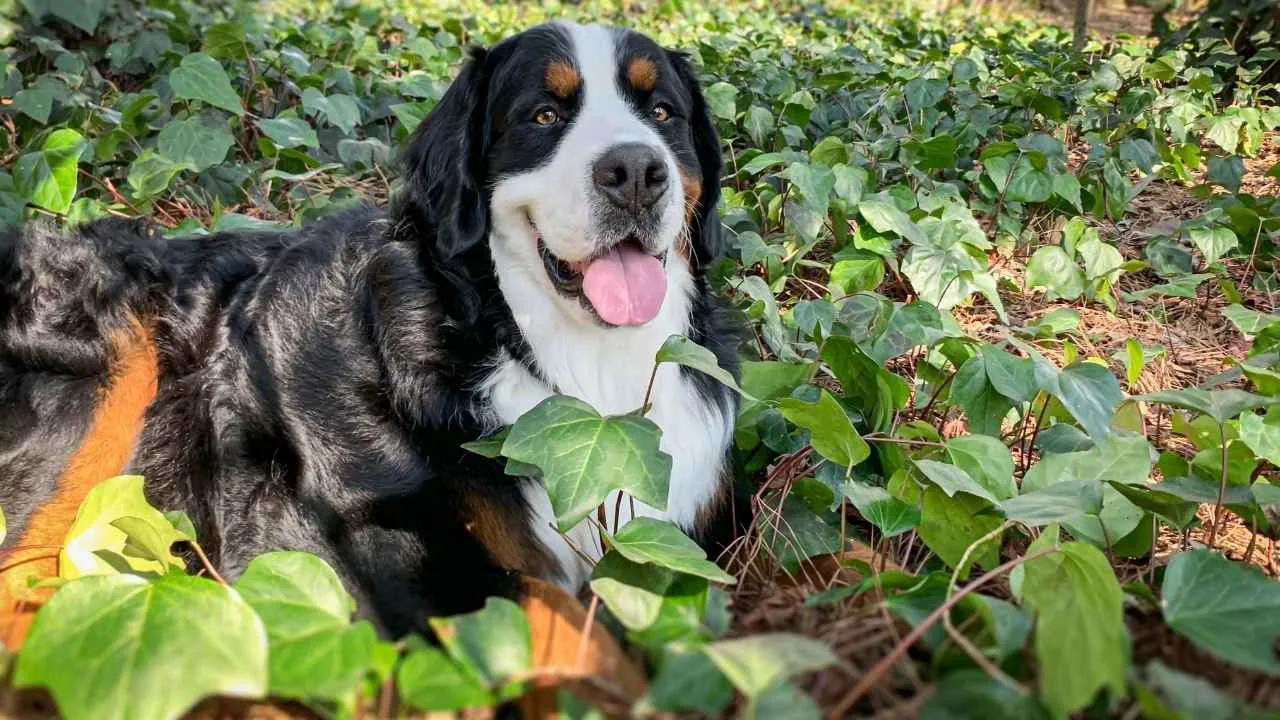
The Bernese Mountain Dog, also called the “Berner”, is a majestic working breed originating from the Swiss Alps. Traditionally employed on farms, these powerful yet gentle giants are known for their calm temperament, loyal demeanor, and affectionate nature.
With a sturdy frame weighing between 70–115 pounds and a height ranging from 23 to 27.5 inches, Berners were bred to endure cold climates and physically demanding tasks. Their trademark tricolor coat and expressive brown eyes give them an instantly recognizable, endearing appearance.
The breed’s long outer coat and woolly undercoat provide not just beauty but resilience against harsh weather conditions, making them the quintessential double-coated mountain dog. Britannica notes that the Bernese Mountain Dog is easy to train, affectionate, expressive, and playful. It is usually friendly with strangers, other dogs, and other pets.
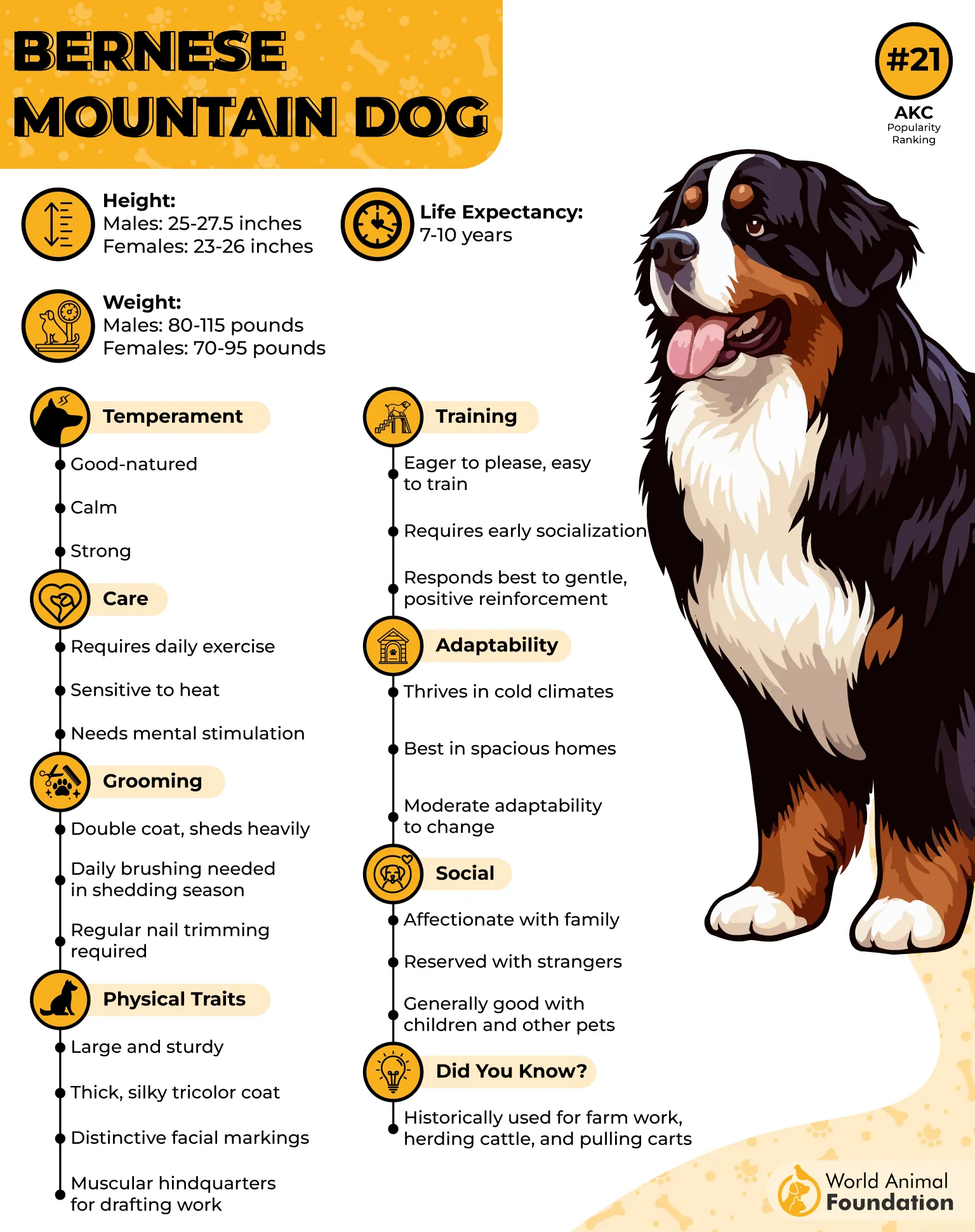
Grooming
Bernese Mountain Dogs possess a dense double coat with a slightly wavy or straight outer layer and a softer, wool-like undercoat. This breed sheds consistently year-round and goes through heavier seasonal shedding twice a year.
Weekly brushing is essential, increasing to daily grooming during shedding seasons to control matting and loose hair. A slicker brush or metal comb helps manage tangles effectively. Regular ear checks and dental care are also recommended to maintain overall health and hygiene.
Fact: Berners are known for their heroism; some have even saved lives during fires and water rescues.
4. Chow Chow
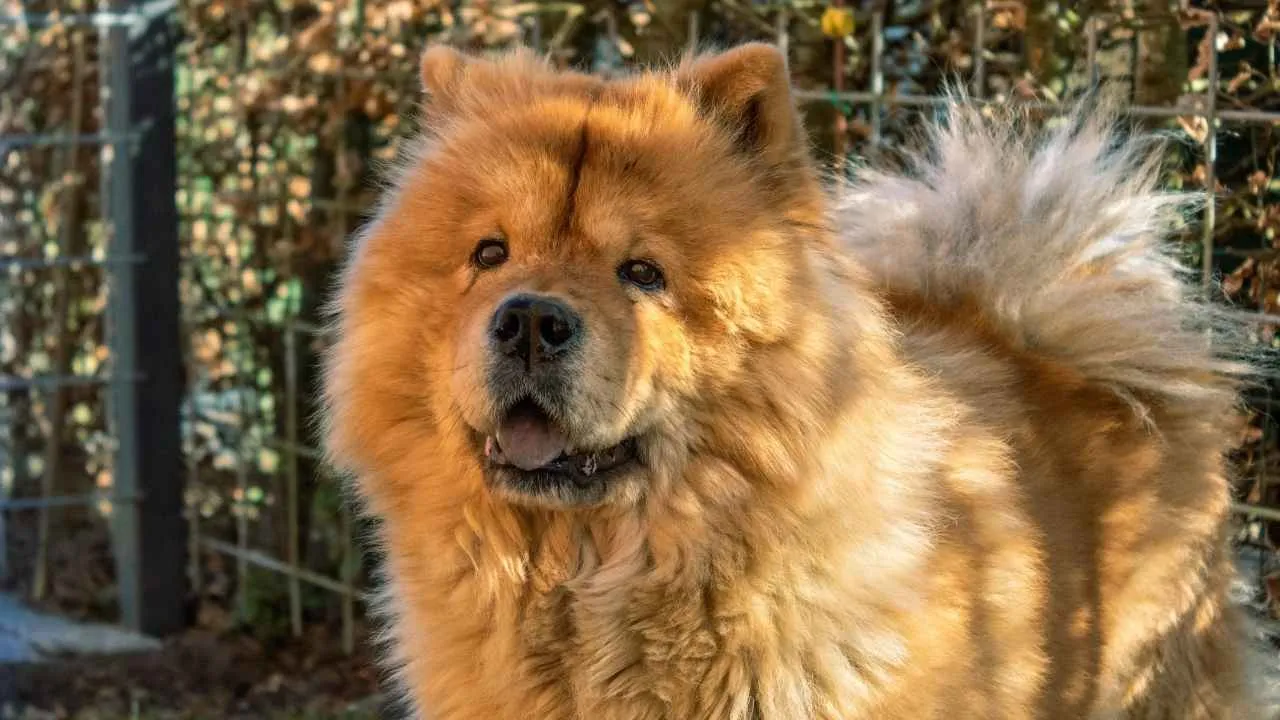
The Chow Chow, often referred to as the “lion dog,” is a dignified and ancient breed with roots tracing back to northern China. Known for its regal demeanor and distinctive lion-like mane, the Chow Chow has served various roles throughout history, from imperial guard dogs to hunting and sled-pulling companions.
Purina describes the Chow Chow as a breed that, while loyal to its owner, tends to be distant and reserved. It is known for being independent and stubborn, not very playful, and typically not affectionate or fond of receiving affection.
These dogs have a unique look: deep-set almond eyes, a broad head, and their signature blue-black tongue. The hallmark of the breed is its plush double coat, which can be either “rough” with a voluminous ruff around the neck or “smooth” with a denser, flatter texture.
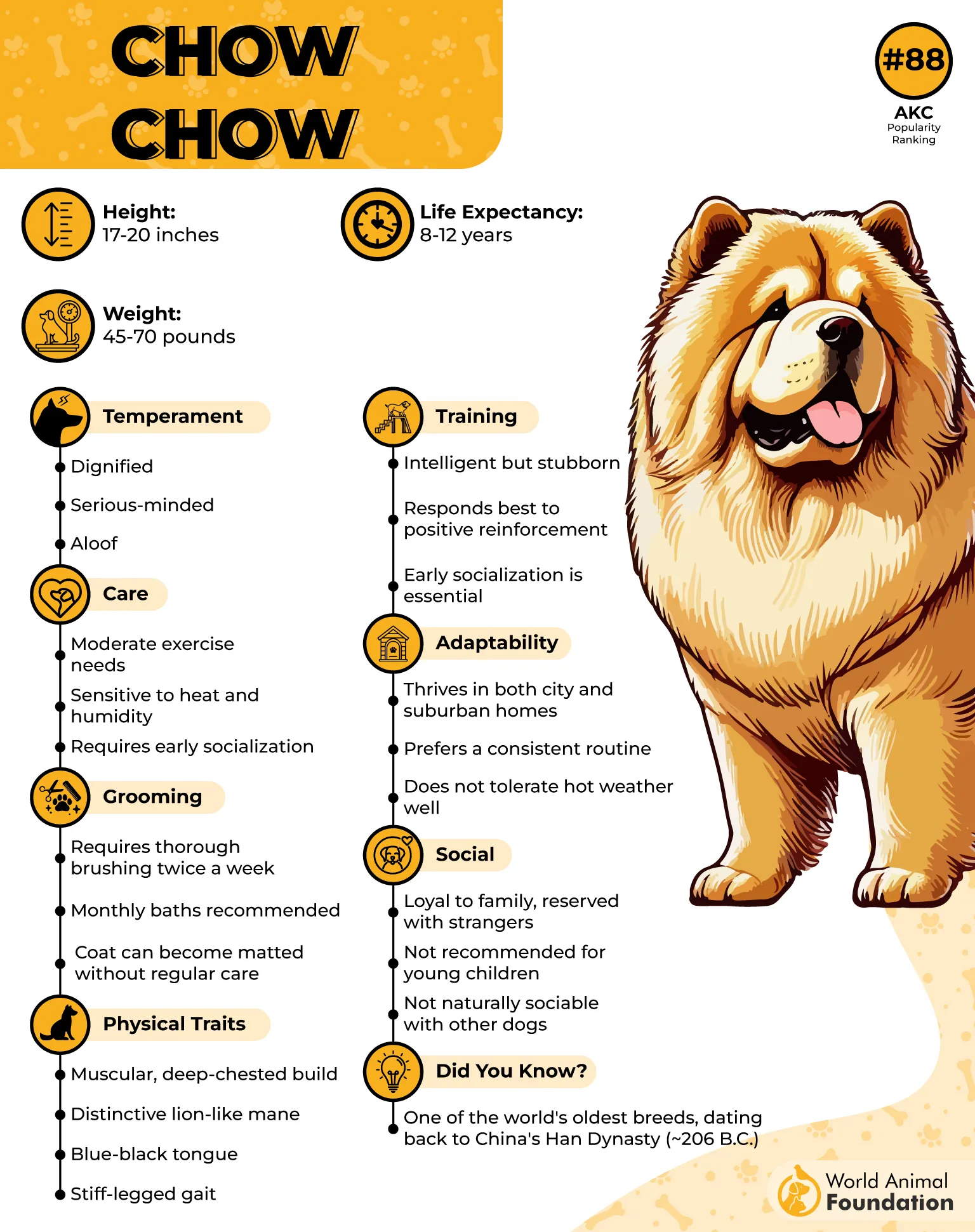
Grooming
Chow Chows possess a thick woolly undercoat paired with either a rough or smooth outer coat. While the rough coat is fluffier and more dramatic in appearance, the smooth variety is sleeker and more understated.
Regardless of type, both require brushing at least twice a week to prevent matting and manage shedding. Owners often find daily grooming essential during seasonal coat blows. Bathing isn’t frequently necessary, but routine maintenance, including ear and face cleaning, is vital for hygiene and comfort.
Fun Fact: The Chow Chow’s aloof exterior hides a gentle, loyal nature, and despite their independent spirit, they form strong bonds with their family.
5. Keeshond
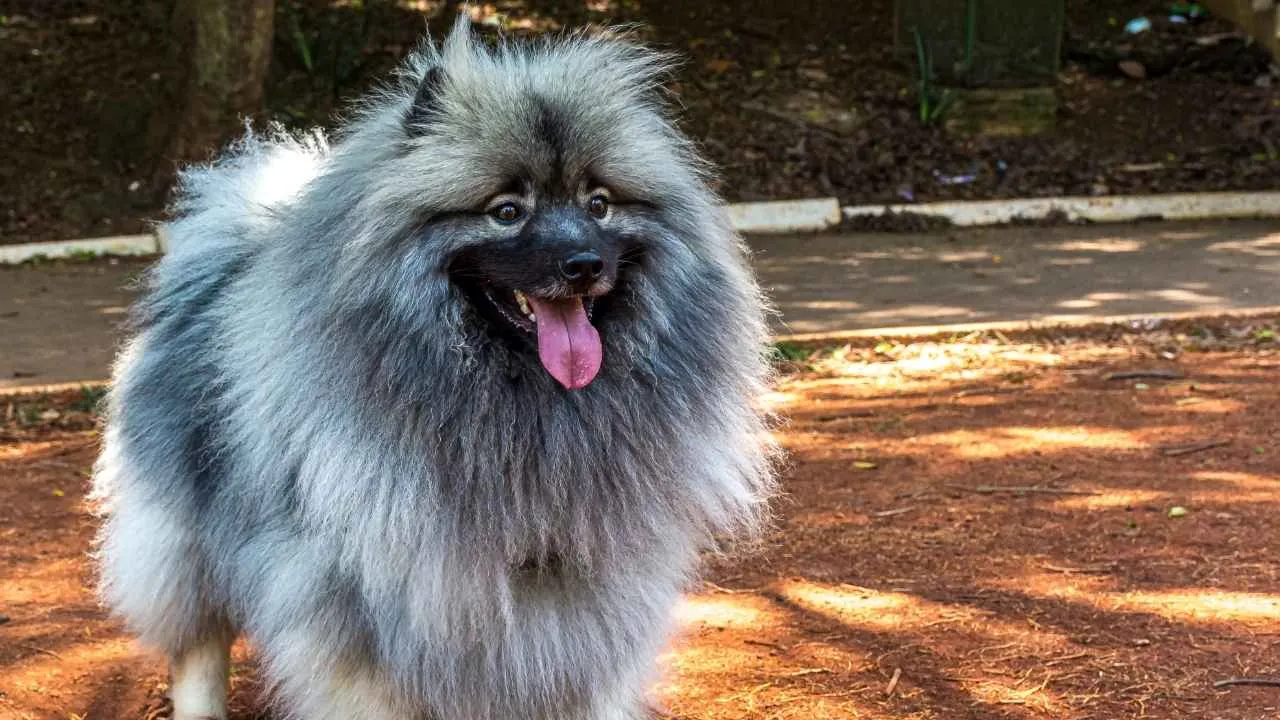
Also known as the Kees, Wolfspitz, or Dutch Barge Dog, the Keeshond is a striking double-coated breed that originated in the Netherlands during the 1700s. Historically, these dogs served as companions and watchdogs on canal barges, earning them the nickname “Smiling Dutchman” for their perpetually cheerful expressions.
Hills Pet explains that the Keeshond looks bigger than its actual size due to its dense, fluffy coat. Their fox-like faces, expressive “spectacles” around the eyes, and plush tails curled over the back make them instantly recognizable. Though compact at 35–45 pounds and around 17–18 inches tall, they radiate elegance and personality.
Their thick coats not only give them a fluffy appearance but also provide excellent insulation in both hot and cold climates. Thanks to their playful, affectionate nature, Keeshonden thrive in family settings and enjoy both indoor lounging and outdoor activity.
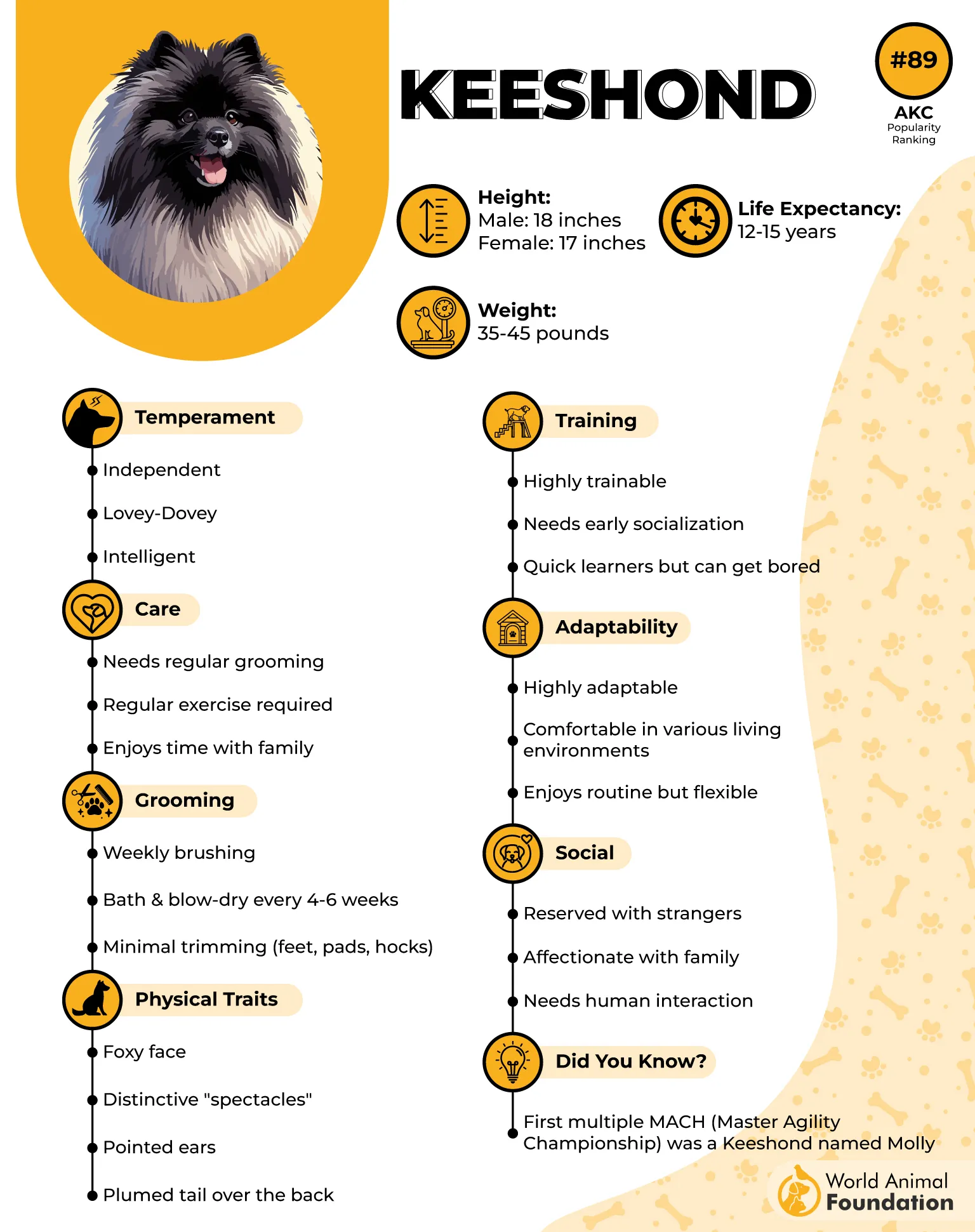
Grooming
Despite the volume of their double coat, Keeshonden are surprisingly odor-free and relatively simple to maintain. Their long, straight topcoat and dense undercoat require thorough brushing at least once a week to prevent matting and manage moderate shedding.
Occasional trimming around the feet can help keep their look tidy. With the right tools and a little dedication, grooming can be a bonding experience rather than a chore.
Fact: Princess Diana and Walt Disney were among the famous admirers of this charming breed.
6. Labrador Retriever
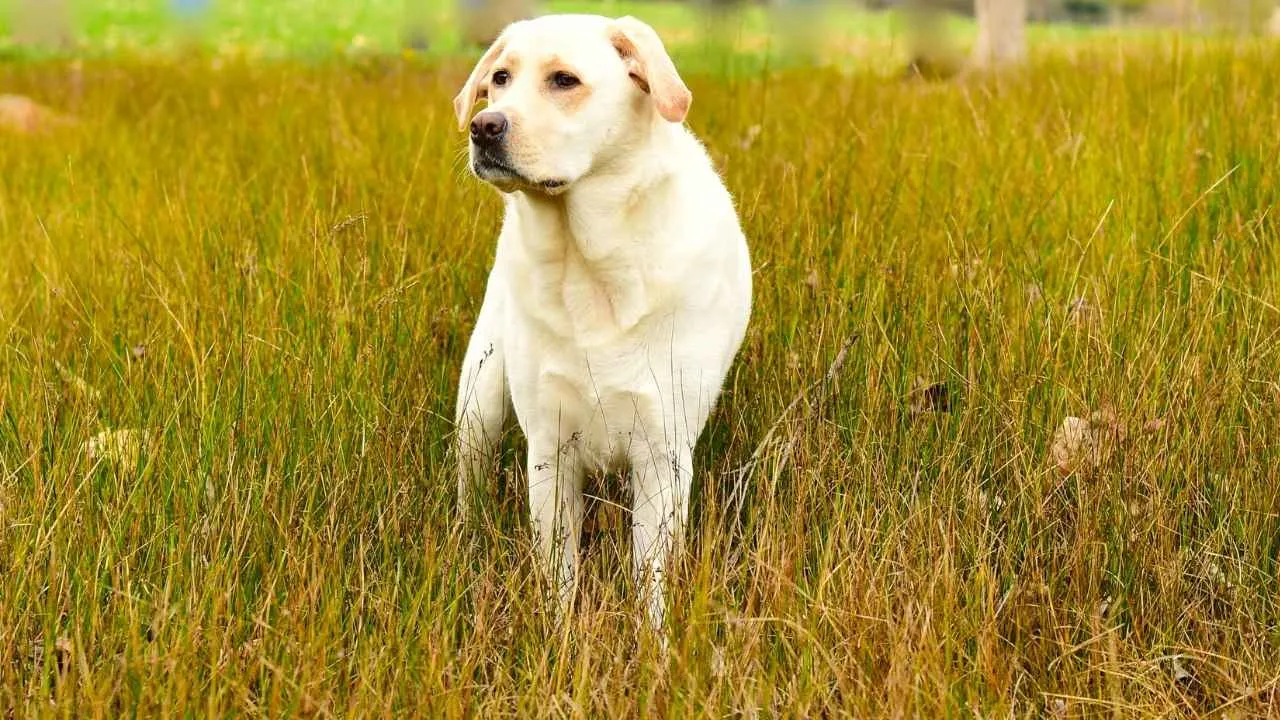
Labrador Retrievers, also known simply as Labs, are beloved worldwide for their friendly demeanor, intelligence, and loyalty. Originating in Newfoundland, they were initially bred as working dogs to retrieve fish and game in frigid waters.
Their athletic build, webbed feet, and muscular frame make them excellent swimmers, while their keen sense of smell and eager-to-please nature contribute to their success in roles such as search and rescue, therapy work, and service tasks. Labs typically weigh between 55 and 80 pounds and stand 21.5 to 24.5 inches tall.
Their short, double-layered coat is one of their most distinguishing traits, designed for weather resistance and insulation. This coat comes in black, chocolate, and yellow, and is topped off with their signature thick “otter tail,” which aids in swimming.
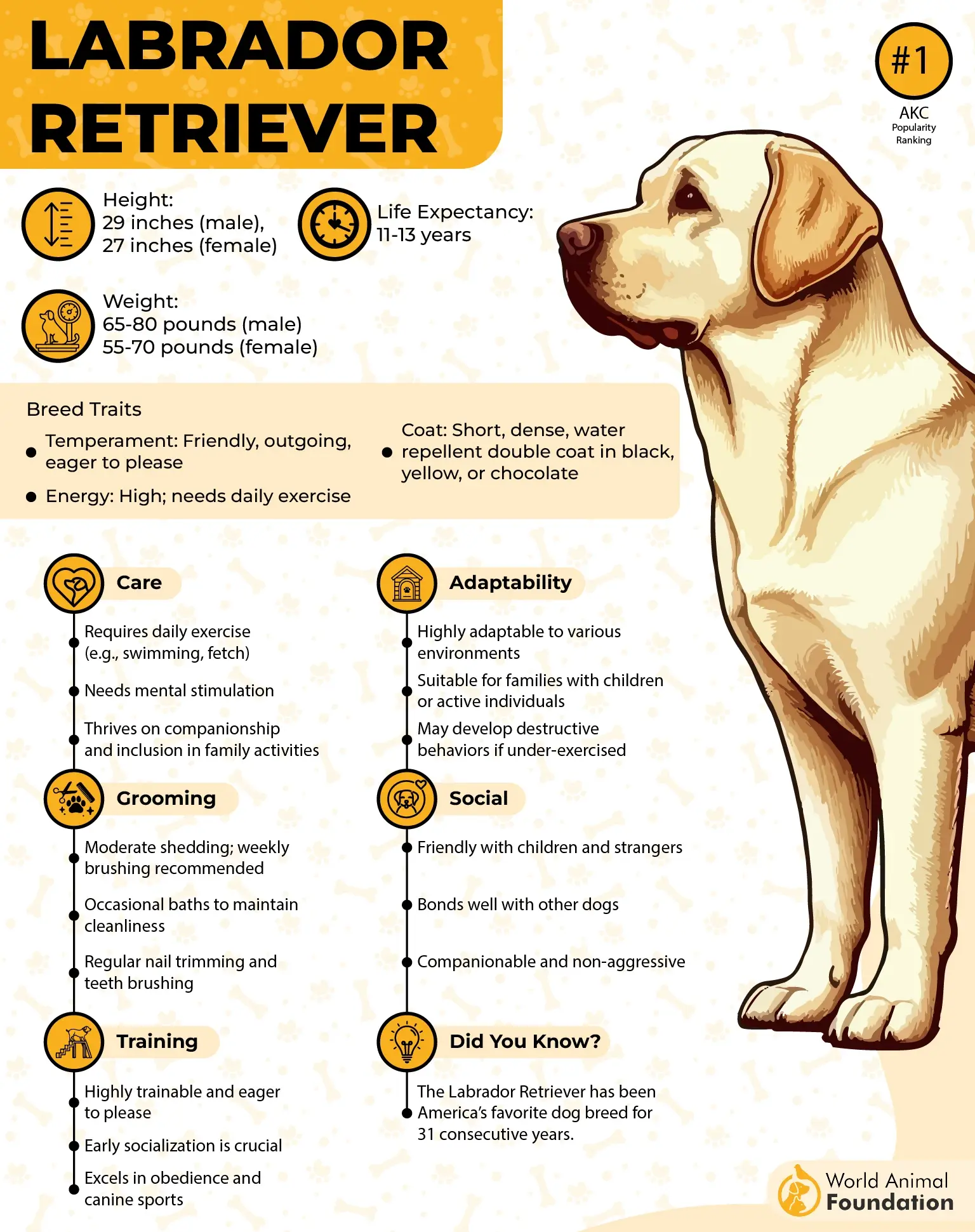
Grooming
Labradors shed year-round and even more heavily during seasonal changes. To manage their dense, water-repellent coat, weekly brushing is essential. Regular grooming also includes bathing, nail trimming, ear cleaning, and dental care.
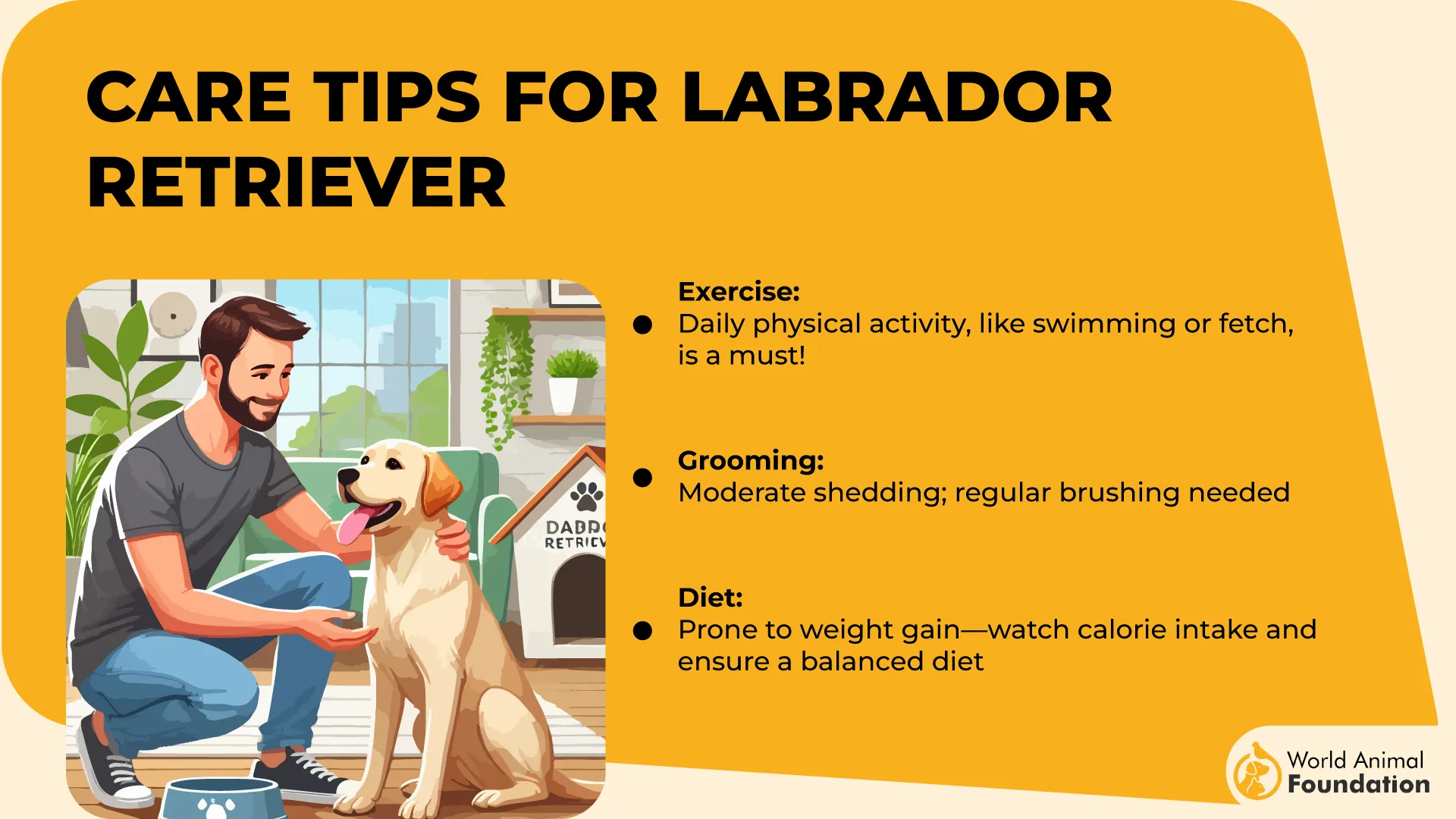
However, their coat should never be clipped or trimmed, as it naturally protects them from moisture and harsh climates. Introducing grooming practices early will help acclimate them and make future sessions easier.
Fun Fact: A Labrador named Endal once saved his owner’s life and earned the title “Dog of the Millennium.”
7. Leonberger

Bred to resemble a lion, the Leonberger hails from 19th-century Leonberg, Germany. This majestic breed was developed by crossing Newfoundlands with Saint Bernards, producing a powerful yet affectionate working dog. Known affectionately as “Leos,” these giants historically pulled carts and guarded livestock.
Despite their imposing stature, standing 25.5 to 31.5 inches tall and weighing up to 170 pounds, Leonbergers are renowned for their gentle nature and devotion to family, including children and other pets. Their lush coat, often lion-yellow, red, or sandy in hue, enhances their regal, lion-like appearance.
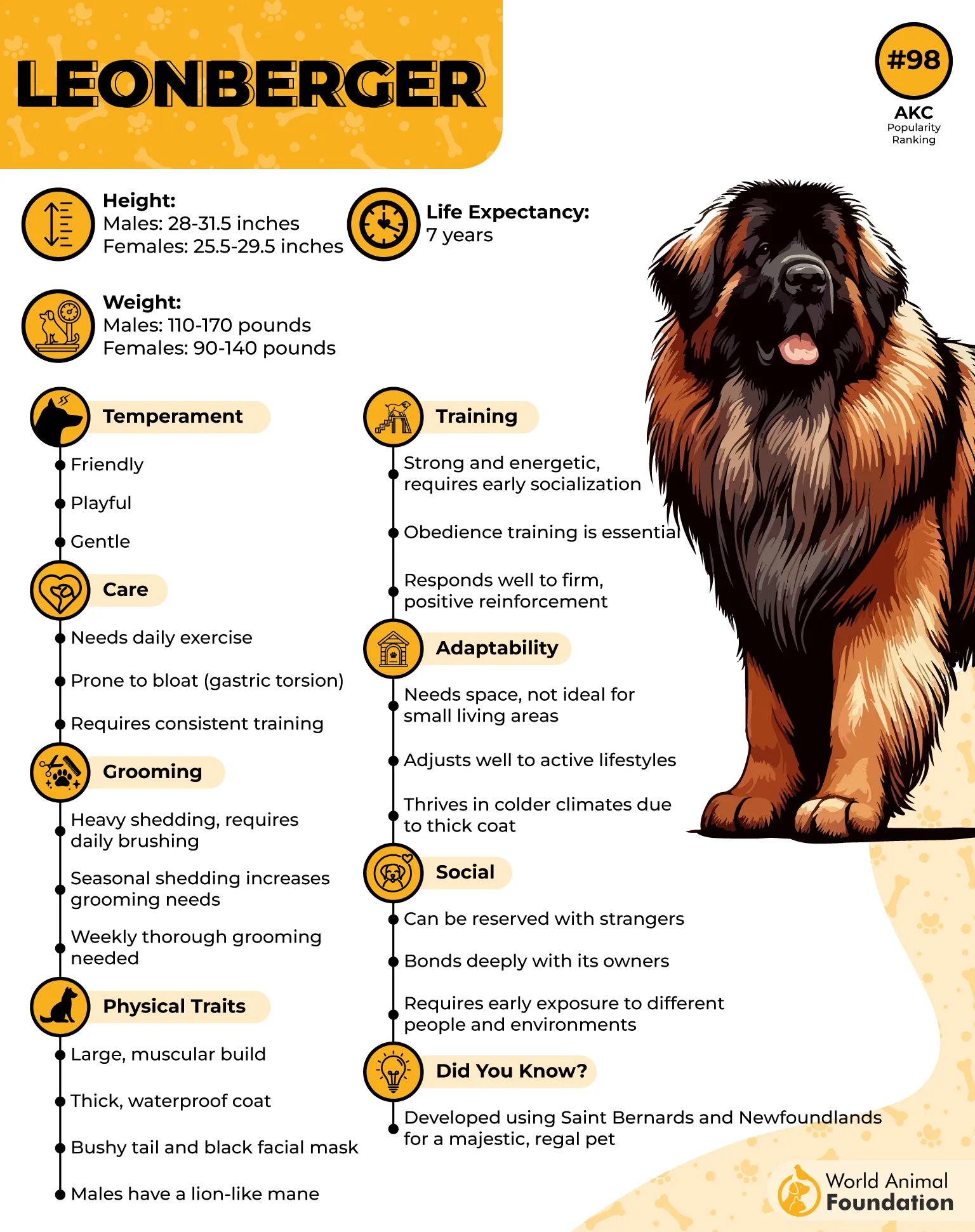
Grooming
Leonbergers sport a luxurious double coat: a soft, dense undercoat and a thick, water-resistant outer layer. Their long hair, especially behind the ears and on the legs, is prone to matting and requires daily brushing to maintain its condition.
A thorough grooming session once a week is recommended, though given their size, it can be time-intensive. Pay extra attention to areas that mat easily to keep their impressive mane neat and healthy.
Fun Fact: Male Leonbergers grow a distinct lion-like mane around the neck, adding to their striking and noble look.
8. Newfoundland
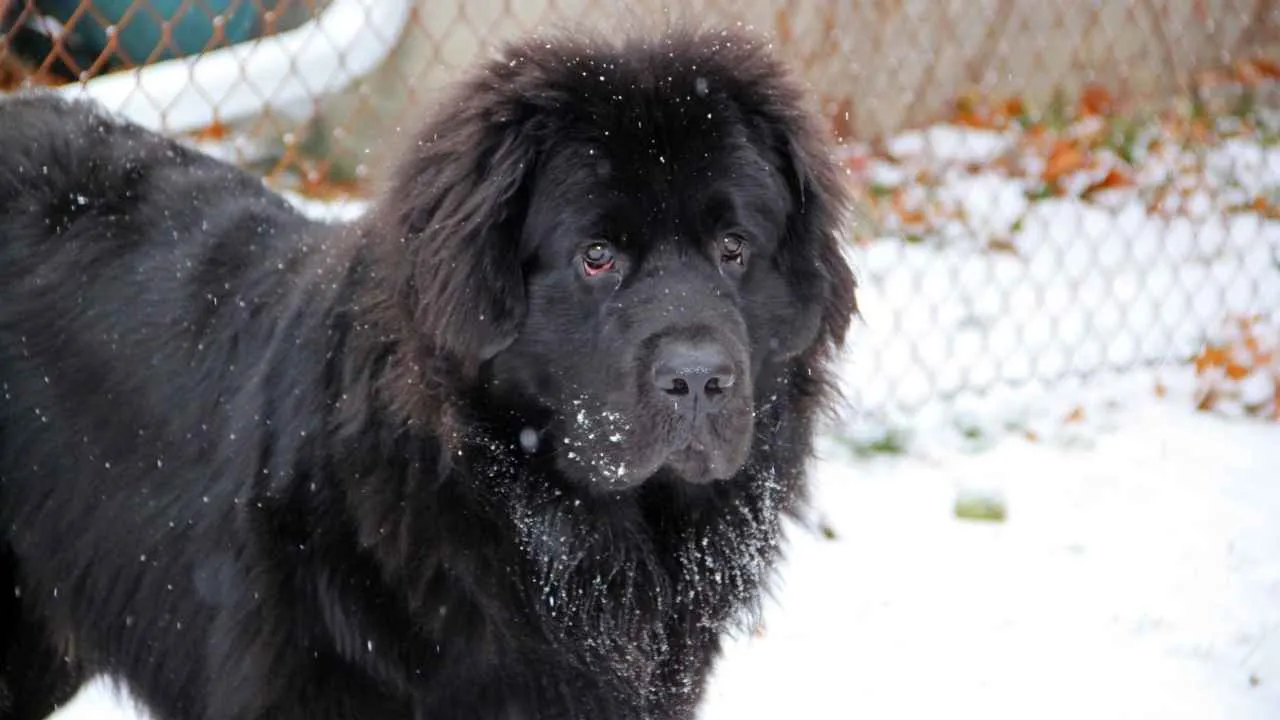
The Newfoundland, affectionately known as the Newfie or “Nanny Dog,” is a majestic working breed originating from Canada’s Newfoundland island. Renowned for their gentle temperament and lifesaving abilities, Newfoundlands have historically served as water rescue dogs.
These affectionate giants, often weighing up to 150 pounds, are easily recognized by their large frame, expressive eyes, and their incredible swimming skills, traits that make them both protective companions and heroic figures in canine history. Their dense double coat is not only iconic but also functional, aiding them in cold waters and harsh climates.
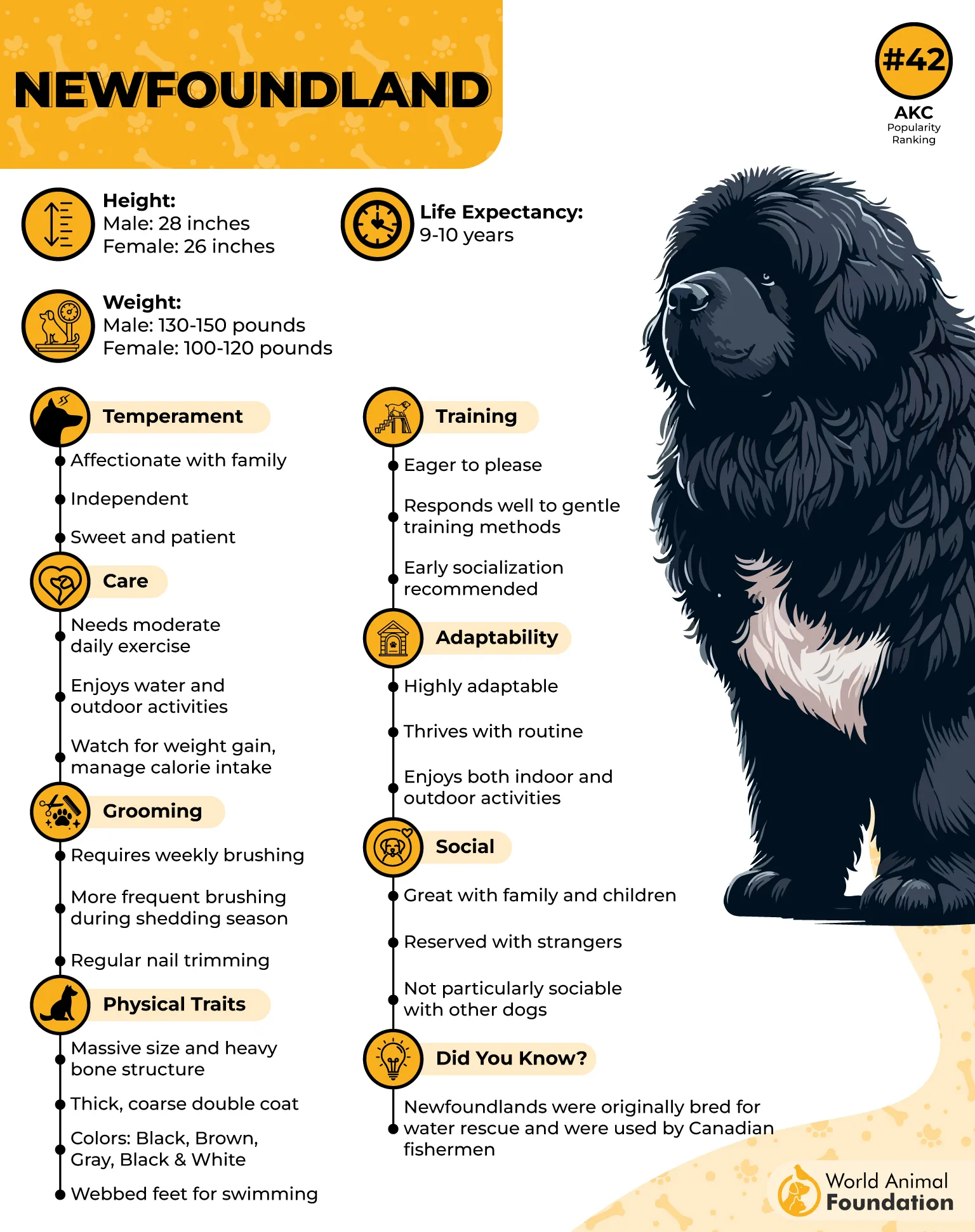
Grooming
Newfoundlands have a thick, water-resistant double coat with a coarse outer layer and a soft, insulating undercoat. While these dogs shed moderately year-round, they “blow” their coat twice annually, requiring daily brushing during those periods.
Outside of shedding seasons, brushing two to three times a week helps manage tangles and maintain coat health. Given their size, grooming can be a demanding task; sturdy grooming tools and surfaces are essential.
Regular maintenance reduces matting and supports skin health, and a professional groomer can offer guidance tailored to your dog’s needs.
Fact: A Newfoundland once saved Napoleon Bonaparte from drowning during his escape from Elba in 1815.
9. Pomeranian
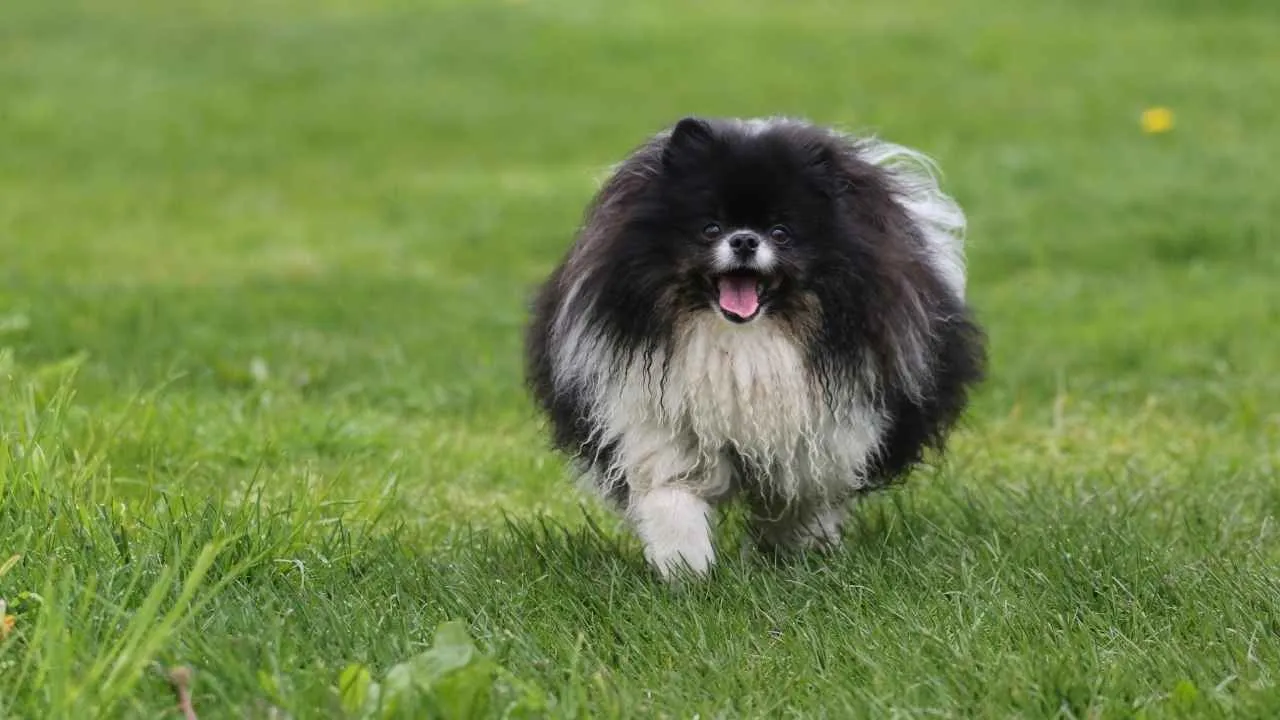
Also known as the Pom, Teacup Dog, or Zwergspitz, the Pomeranian is a pint-sized pooch with a royal history and a personality far bigger than its frame. Originating from the Pomerania region in northern Europe, these double-coated dogs descend from larger Arctic sled-pulling dogs but were refined into their toy-sized form during Queen Victoria’s reign.
She popularized the smaller version we know today, often weighing between 3 to 7 pounds and standing only 6 to 7 inches tall. With their signature foxy faces, vivacious expressions, and voluminous double coats, Poms have become icons of elegance and flair.
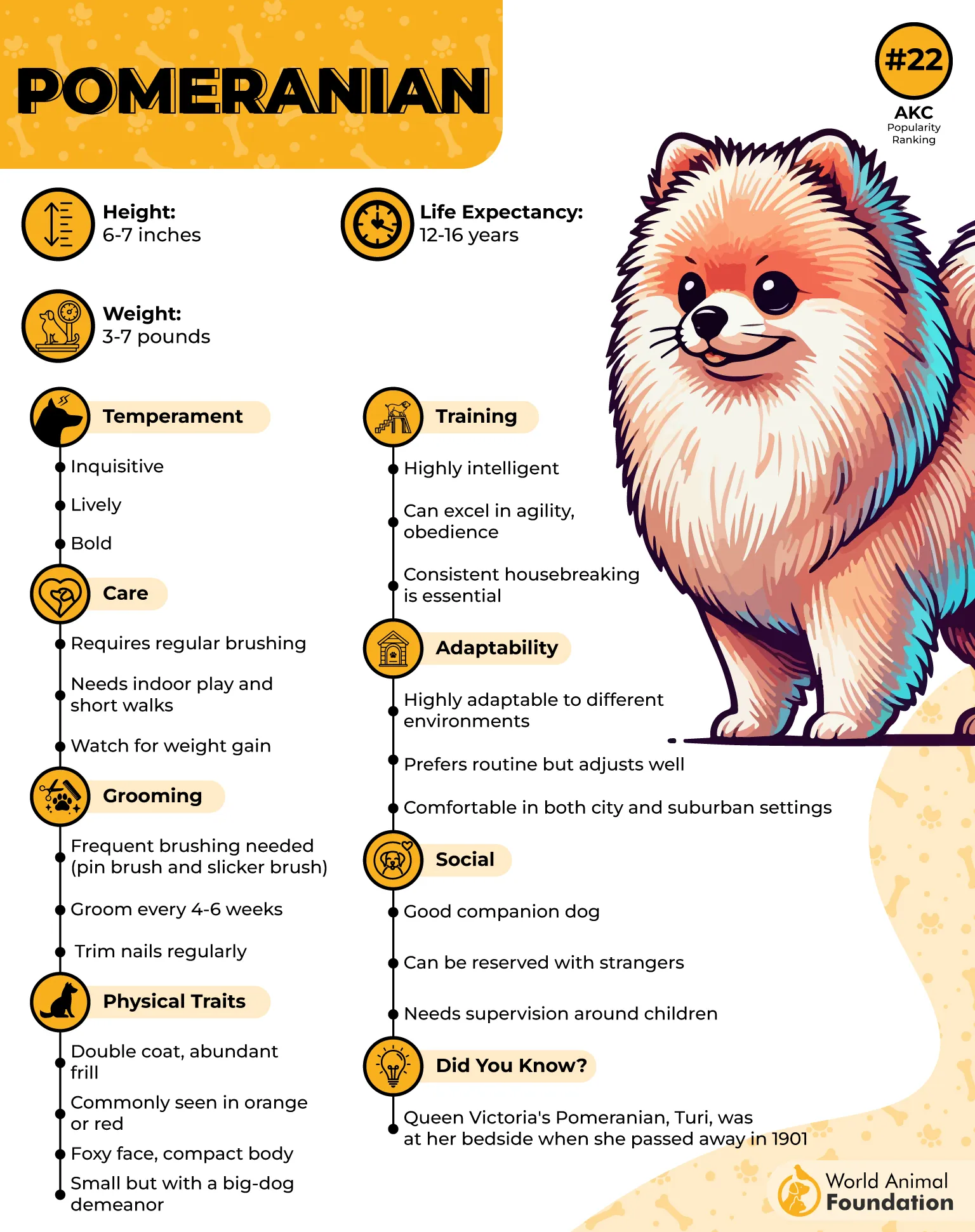
Grooming
This breed’s luxurious dog’s coat has two layers; it consists of a smooth outer layer and a textured, thick undercoat that requires consistent upkeep. Brushing once or twice a week is essential to prevent matting and tangling, especially if the coat is left long.
A slicker brush and metal comb help manage the fluff and maintain the Pom’s signature silhouette. Monthly baths are recommended to keep the coat clean and healthy. Despite their size, Pomeranians demand attention when it comes to grooming.
Fun fact: Michelangelo reportedly had a Pomeranian keeping him company while painting the ceiling of the Sistine Chapel.
Conclusion
Double-coated dogs are not just fluffy, they’re naturally equipped to handle extreme cold temperatures and shifting climates. Their weather-resistant coat, with a dense underlayer and a protective topcoat, is specifically built to insulate in cold weather and provide cooling airflow when it’s warm. Breeds like the Border Collie thrive outdoors due to this clever coat type, which guards them while they work, play, or rest in variable weather. Maintaining that coat properly is essential to their health and comfort.
To support their natural insulation, never shave double-coated dogs, as doing so disrupts their ability to self-regulate body temperature. Instead, focus on regular grooming practices to remove loose fur and clear out dead hair. This not only reduces shedding but also keeps the coat clean and functional. Whether you’re cuddling with a plush Pomeranian or hiking with an Akita, honoring their unique coat needs helps ensure they stay healthy, happy, and perfectly suited to the great outdoors.


